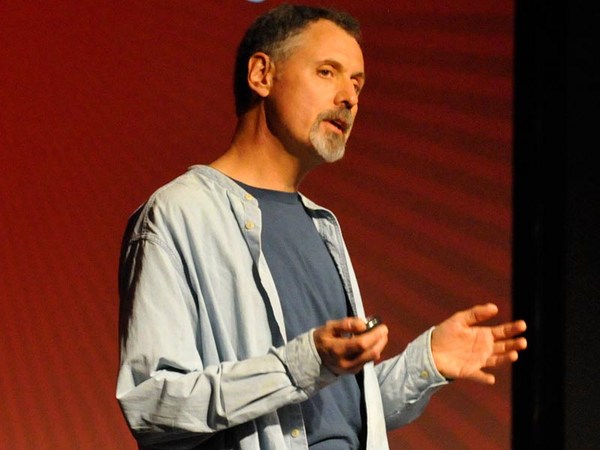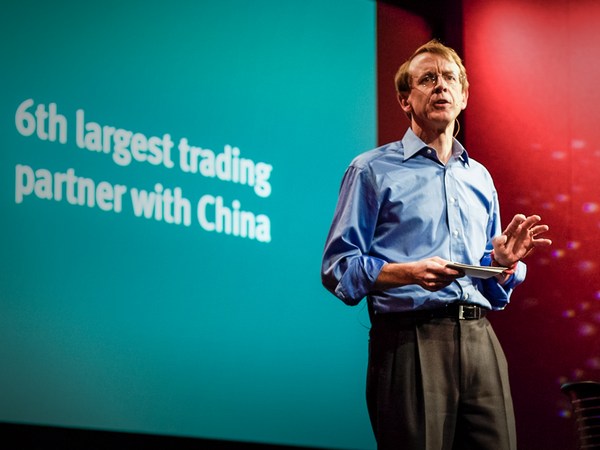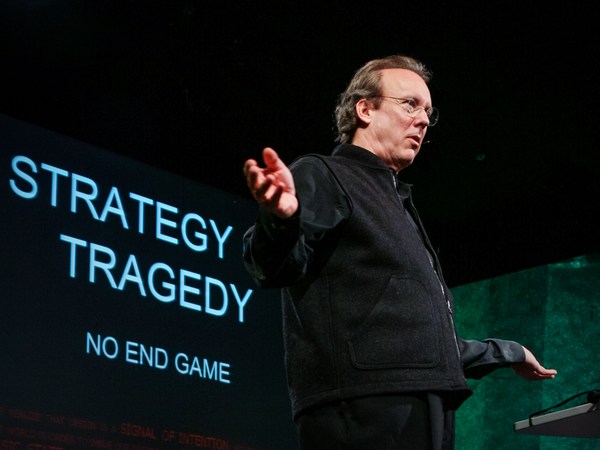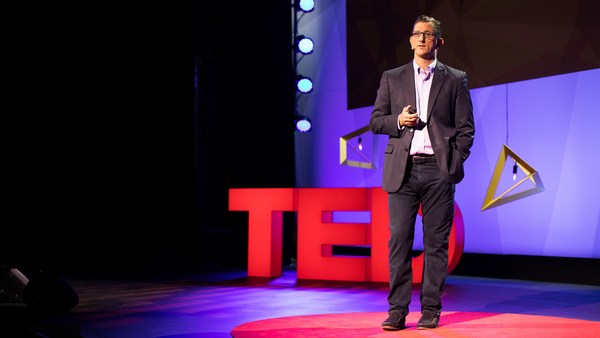What's happening to the climate? It is unbelievably bad. This is, obviously, that famous view now of the Arctic, which is likely to be gone at this point in the next three or four or five years. Very, very, very scary.
So we all look at what we can do. And when you look at the worldwide sources of CO2, 52 percent are tied to buildings. Only nine percent is passenger cars, interestingly enough. So we ran off to a sushi bar. And at that sushi bar we came up with a great idea. And it was something called EcoRock. And we said we could redesign the 115-year-old gypsum drywall process that generates 20 billion pounds of CO2 a year. So it was a big idea. We wanted to reduce that by 80 percent, which is exactly what we've done.
We started R&D in 2006. Decided to use recycled content from cement and steel manufacturing. There is the inside of our lab. We haven't shown this before. But our people had to do some 5,000 different mixes to get this right, to hit our targets. And they worked absolutely very, very, very hard. So then we went forward and built our production line in China. We don't build this production equipment any longer in the U.S., unfortunately.
We did the line install over the summer. We started right there, with absolutely nothing. You're seeing for the first time, a brand new drywall production line, not made using gypsum at all. That's the finished production line there. We got our first panel out on December third. That is the slurry being poured onto paper, basically. That's the line running. The exciting thing is, look at the faces of the people. These are people who worked this project for two to three years. And they are so excited. That's the first board off the line. Our Vice President of Operation kissing the board. Obviously very, very excited.
But this has a huge, huge impact on the environment. We signed the first panel just a few weeks after that, had a great signing ceremony, leading to people hopefully using these products across the world. And we've got Cradle-to-Cradle Gold on this thing. We happened to win, just recently, the Green Product of the Year for "The Re-Invention of Drywall," from Popular Science. Thank you. Thank you. So here is what we learned: 8,000 gallons of gas equivalent to build one house. You probably had no idea. It's like driving around the world six times.
We must change everything. Look around the room: chairs, wood, everything around us has to change or we're not going to lick this problem. Don't listen to the people who say you can't do this, because anyone can. And these job losses, we can fix them with green-collar jobs. We've got four plants. We're building this stuff around the country. We're going as fast as we can. Two and a half million cars worth of gypsum, you know, CO2 generated. Right? So what will you do? I'll tell you what I did and why I did it. And I know my time's up.
Those are my kids, Natalie and David. When they have their kids, 2050, they'd better look back at Grandpa and say, "Hey, you gave it a good shot. You did the best you could with the team that you had." So my hope is that when you leave TED, you will look at reducing your carbon footprint in however you can do it. And if you don't know how, please find me -- I will help you.
Last but not least, Bill Gates, I know you invented Windows. Wait till you see, maybe next year, what kind of windows we've invented. Thank you so much. (Applause)





